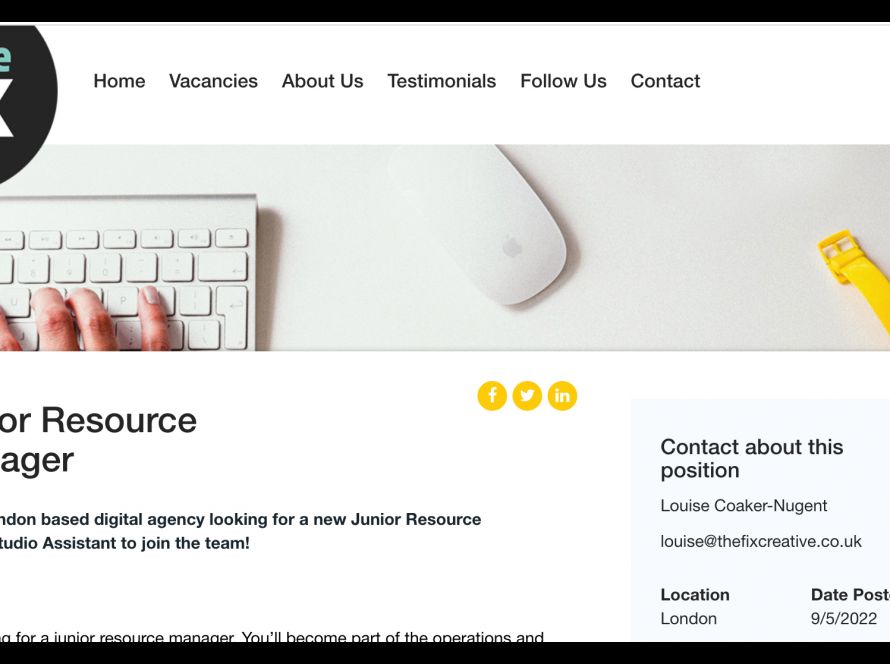Are you maximising the recruiting potential of your website?
1. Promote Your Recruitment Brand
Corporate culture and ethics are as important to candidates as salary and benefits. Make sure you are selling your recruitment brand on every page of your recruitment website.
Employee case studies are an effective way of promoting your recruitment brand. Video is also a great way to get across the culture of a company.
Present your recruitment brand honestly throughout the site. If you’re running a high-octane sales operation, don’t present yourself as a creative agency with photos of people sitting on bean-bags! Use your recruitment brand as a screening tool for prospective candidates.
At some point candidates will come into your office and experience your corporate culture, where a clear reflection of your recruitment brand will help you find the most suitable candidates.
Every company has its own recruitment brand, use it!
2. Give the People What They Want… Jobs
It’s easy to fall in the trap of building pretty, over-flashy websites that just don’t work. Candidates will visit your recruitment website to look at your jobs; if they don’t find those quickly they’ll give up.
Create an easy to use layout and navigation scheme. You want to create a website that encourages people to search and apply for jobs, make it easy for them to do this. A flashy website design with animation may look nice on paper but will it convert candidates?
3. Make Job-Hunting More Like Shopping
The key goal with a recruitment website is to get qualified candidates applying for your jobs. An interactive experience similar to online shopping can help visitors find the right jobs fast. With a whole generation used to shopping carts on websites, these tools give the user familiarity and a much more engaging experience.
Make sure candidates are only one click away from relevant jobs at any time. As well as advanced job search, features such as Browse Jobs show the number of jobs within the sectors your company works in, with an indication of how many live jobs there are in that category.
This provides an incentive for the candidate to view all jobs in that section. Our research shows that 60-75% of job searches are performed this way.
4. Test the Application Process
Once you’ve got a candidate interested in a job, you don’t want to blow it at the last moment. It sounds obvious but far too many recruitment websites have application forms that simply don’t work. Make sure you regularly test the application process as sometimes changes to websites and servers can cause problems with CV uploading.
Add guidance text throughout the application process to keep the candidate informed. This is even more important with multi-page application forms to re-assure the candidates that it’s all worth it.
5. Think Beyond Job Boards
It’s all well and good having a great recruitment website, but if nobody can see it then it’s a wasted investment.
Most recruiters use job boards to promote their vacancies; however these steer candidates away from your recruitment website and onto external databases. Job search engines such as Oodle and Indeed are cost-effective services and channel traffic to your recruitment website pages.
If you do use job boards, ask if job applications can be made on your recruitment website, rather than within the job board. This helps you to register candidate details yourself and manage applications more easily.
6. Update Social Media with Jobs
Some recruitment systems such as Recsite let you easily send job postings to Twitter and Facebook. This helps to automate your recruitment marketing and keep your candidates informed across media platforms.
Take featured or urgent jobs and post them as tweets on Twitter, and also as status updates on Facebook. As you grow your connections on these sites, you will develop a powerful and FREE marketing channel.
7. Use Your Database of Candidates
Make sure you are capturing data from candidates as they apply for jobs. At the very least you should ask for name and email address so that you can keep them informed of future vacancies.
Advanced profiling tools can help to target jobs to specific candidates. Our client 4Social Work have automated job alerts sent out to candidates when a job is posted to match skills and location.
Even a simple plain text newsletter sent out monthly can really boost traffic to your recruitment website.
8. Optimise for Google
Make your site and jobs easy to find in Google. Around 65% of recruitment website traffic comes through search engines so it’s important to make sure you’re job pages can be indexed by the search engines.
Make sure there are text links to your job pages from the home page of your site. This will ensure the search engine bots can find all your job adverts. Intro pages such as flash animations can block the search engines from accessing the important pages of your site.
Syndicating with job boards and search engines can benefit your search engine performance by creating inbound links to your job pages.
Whatever the sophistication of your web presence, we hope that by following the guidelines above you will improve your recruitment website and get more from your e-recruitment ventures!



